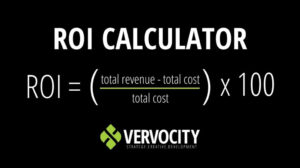Digital marketing continues to drive the growth of modern businesses. If you want to be successful in today’s digital age, you must establish a strong online presence that reflects your business goals.
However, establishing an online presence alone isn’t enough to deliver results. You need to determine if your digital marketing strategy is effective or not. Measuring the return on investment (ROI) is crucial to the success of your marketing campaigns.
This blog post will provide valuable insights on how to measure the ROI of your digital marketing campaigns.
1. Define Goals and Objectives
Before measuring ROI, establish goals and key performance indicators (KPIs) for your digital marketing campaigns. These goals should be specific, measurable, achievable, relevant, and time-bound (SMART). Determine what you want to achieve from your campaigns – whether that’s increased website traffic, improved search engine rankings, higher conversion rates, or better brand awareness. Once you have your goals in place, choose specific KPIs that align with your goals.
2. Choose Metrics to Measure
Several KPIs can be used to measure the success of digital marketing campaigns. These metrics vary depending on the campaign objectives. For instance, website traffic metrics like page views, unique visitors, and bounce rates, are important if your campaign objective is generating website traffic. Conversion metrics such as the click-through rate (CTR), cost-per-click (CPC), and cost-per-acquisition (CPA) are essential if your campaign objective is driving conversions.
Google Analytics and AdWords are popular tools to track and measure different digital marketing metrics. You can also use social media analytics tools to measure engagement, reach, and other metrics.
By choosing clear metrics, you can track your progress along the way and measure the effectiveness of your digital marketing campaign.
3. Calculate ROI
Once you have established the KPIs relevant to your campaign, you can now begin to measure your ROI. ROI is a simple metric that allows you to determine the profitability of your campaign. It is measured by subtracting the total campaign cost from the total revenue generated. That number is then divided by the total cost and multiplied by 100. This will generate a percentage showcasing the campaign’s success and total ROI.
There are different methods to calculate ROI, but generally, the formula is:
ROI = (total revenue – total cost) / total cost x 100

For example, if you spend $1000 on a social media campaign and generate $2000 in sales, your ROI would be:
ROI = (2000 – 1000) / 1000 x 100 = 100%
This means that for every dollar you spent on the campaign, you generated $2 in revenue, resulting in a 100% ROI.
4. Utilize A/B Testing
A/B testing is a technique that involves testing two versions of your digital marketing campaigns to determine which one performs better. This method can help you identify which elements of your campaigns are most effective and optimize your strategies accordingly. To conduct A/B testing, create two versions of your digital marketing campaign, such as different ad copy or graphics, and track their performance to determine which one performs better.
HubSpot offers a Complete A/B Testing Kit to help get you started on the basics of testing.
5. Optimize Your Campaigns
Lastly, you need to be willing to adjust your digital marketing strategy based on your results. Once you have identified what works and what doesn’t, you can allocate your resources and efforts into channels that generate the highest ROI. Strategies such as content creation, search engine optimization (SEO), pay-per-click (PPC), social media marketing, email marketing, and mobile marketing can significantly improve the ROI of your digital marketing campaigns.
For instance, if your social media ads are not generating leads, you can change the ad copy, adjust the targeting settings, or experiment with different ad formats. Strategies that worked in the past may not continue to generate the same results. Give your campaigns the time and chance to find success, but don’t be afraid to try something new if you find they aren’t working.
Conclusion
The insights that come from analyzing ROI can help marketers make informed decisions about budget allocations and optimization for future campaigns. It also allows businesses to pivot and adjust to changing market demands, stay ahead of the competition, and maximize advertising budgets. The vast amount of potential data can be overwhelming, so remember to designate specific goals and objectives before getting started.











